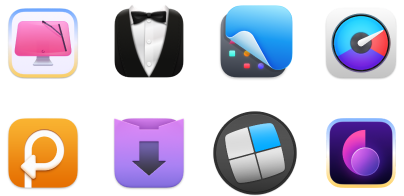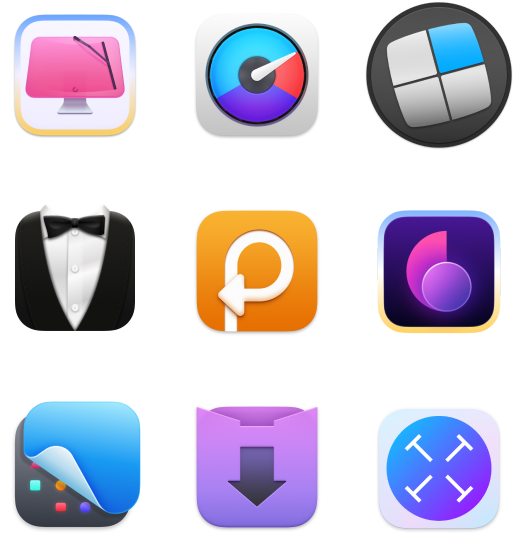Safari vs. Google Chrome: What browser is better for Mac in 2026? (My top insights)
- Choose Safari for the best Mac-native experience.
Safari is built specifically for macOS, which means better battery life, lower RAM usage, tighter integration with iCloud, Keychain, Apple Pay, and overall smoother performance during heavy multitasking. - Use Chrome if your workflow depends on extensions and Google services.
Chrome shines when you rely on a large extension ecosystem, advanced web apps, multiple user profiles, or Google tools like Translate, Lens, and Chromecast. - Expect Safari to outperform Chrome under system load.
When many tabs or resource-heavy sites are open, Safari typically uses less memory and drains the battery more slowly, making it the better choice for long MacBook sessions. - Privacy-conscious users should default to Safari.
Safari blocks third-party trackers by default and includes Intelligent Tracking Prevention, while Chrome follows Google’s data ecosystem and collects more browsing-related information. - Optimize either browser with the right tools.
Keep Safari or Chrome fast and secure by pairing them with apps like CleanMyMac for cleanup, iStat Menus for performance monitoring, and ClearVPN for encrypted browsing on public Wi-Fi. You can access all of these and 250+ other apps with Setapp. Start a free 7-day trial.
Ever since I’ve owned a Mac, I’ve naturally been inclined to use Safari. As it’s the default browser for Apple products, I automatically assume it to be the browser of choice. Using my logic, I figured it would work best with the operating system. Yet, over time, I started turning to Google Chrome whenever I’d experience hitches in my browsing experience.
So, based on personal experience and years of using both browsers, is Safari better than Chrome, or is it the opposite way around?
Let’s figure out which one is the better choice and then dive into the details:
| Feature battle | Safari | Google Chrome |
| Privacy | Built-in intelligent tracking protection. | Has attractive security features but less privacy-focused. |
| Performance | Integrates with Apple hardware for faster loading times and less RAM usage. | Can compete with certain performance benchmarks vs. Safari and displays each tab’s memory usage. |
| Extensions | Sound selection of extensions. | Extensive library as browser is available for both PC and Mac. |
| App Integration | Integrates best with the Apple ecosystem. | Integrates best with Google services. |
| Customizability | Simpler, focused experience with fewer customization options. | Many customization options with ability to create multiple profiles. |
| Unique features | Reader mode, picture-in-picture mode, Reading List. | Sync across devices, window locking, reader mode, picture-in-picture mode. |
Looking for something new and AI-powered? Try Atlas, a fresh AI browser from OpenAI. It’s too early to compare it with the big players just yet, but here’s a quick look at what the ChatGPT Atlas browser offers — check it out!
How to choose between Safari and Google Chrome on Mac?
It’s time to pit Chrome vs Safari on Mac against each other. I’m going into a deep dive into the use cases, features, and key aspects of both browsers so you can decide which browser is best for you and your browsing experience.
User interface: Safari vs. Chrome
Let’s start with the user interface, which typically makes up the first impression.
If we look at the Safari browser, we can see that minimalism is the name of the game. The URL bar allows you to conduct searches, input website addresses, add the page to your Reading List (read later), refresh, mute the volume, and initiate the Reader View.
There are also buttons to open up your bookmarks list, go forward and back a page, share, look through your downloads, add new tabs, and view all your open tabs. Webpages and tabs look clean and crisp.

Meanwhile, Google Chrome’s interface is by no means complicated, either. The main difference is that Chrome adopts a more rounded interface with tabs sitting on top of the browser like a classic file folder. The URL bar is less feature-rich, with a favorite tool and a settings menu to manage everything from cookies to specific site settings.
Of course, there’s the refresh button, forward and back arrows, the extensions list, and the full menu through the three-dot icon, where you can access everything from your history to passwords, bookmarks, and more. Native Google tools like Translate, casting, and Google Lens are also available there.

Main features: Safari vs. Chrome
In my opinion, there’s not a massive difference between the two browser interfaces, but Google Chrome can sometimes feel a bit friendlier, while Safari can look more rigid. After all, it’s leaning into the clean Apple aesthetic.
But what about the features you can access on both browsers? These are:
- Tab management: Both browsers have ample tab management settings, including tab groupings, pinned tabs, and the ability to open tabs in multiple windows.
- Bookmarks: Bookmarks are much easier to access in Safari, as one click can get you to your Bookmarks, Reading List, and other saved tabs. On Chrome, it can take a while to open the Bookmarks bar, and the organization can feel less intuitive.
- Home page: The Chrome homepage is centered around the Google search experience, with shortcuts and frequently visited websites. In contrast, Safari’s homepage doesn’t feature a URL bar but shows icons of your Favorites, Frequently Visited, and Reading List. Plus, there’s a rundown of your Privacy Report.
- Media handling: Both Safari and Chrome boast picture-in-picture mode, which lets you watch videos while using other apps and browsing in other windows.
- Reading Mode: Safari’s Reading Mode is truly refined, turning the entire page into a clean, focused experience. Chrome has reader mode as well, but it requires a few steps to get to and only comes up as a sidebar. The benefit of Chrome’s Reading Mode is that you can customize the font, color, and size of the text.
- Web apps: While both browsers support web apps well, the integration experience is different. Safari supports Progressive Web Apps, where you can add websites right to your home screen or dock like a native app. It also integrates with other macOS features like iCloud and Apple Pay.
- Autofill: Autofill is available in both browsers, but only Safari can use your Keychain. Chrome relies on what’s saved in your Google account, which means it’s not as tightly integrated with Apple privacy.
- Page translations: The translate feature on Safari is directly integrated with the Apple ecosystem, where you can simply highlight some text, right-click, and click the translate option for a quick and seamless translation into and from any language you like. With Google Chrome, it uses Google Translate to translate text.
- User profiles: Chrome has dedicated user profiles that let you manage work vs. personal browsing and bookmarks separately. Safari doesn’t have separate user profiles, but it lets you create separate tab groups for work vs. play and uses iCloud syncing to sync browsing history, bookmarks, and tabs across devices.
Safari is naturally part of the Apple ecosystem, which means it offers a smooth and cohesive experience through iCloud. Regardless of which device I’m using, whether my iPhone or Mac, I can pick up where I left off. Yet Chrome does boast some useful features and integration with Google’s features, which I also use.
Extensions: Safari vs. Chrome
As I established in my table earlier, Chrome takes the cake with a plethora of browser extensions. The library is so packed that it's ideal for those who want a little bit of everything to bolster their web browsing experience — there’s bound to be something for even the most niche use cases.
That’s not to say that Safari doesn’t have robust extension options either, but since it’s a browser only available on Apple devices, its selection is naturally more limited and caters to the Apple experience.
Does Safari work better on Mac than Google Chrome?
If you’re just browsing casually, you might not notice a difference right away between Google Chrome and Safari browsers. But if you were to perform heavy tasks, have lots of browser tabs open at once, or access resource-hogging websites, you’ll likely start to see Safari perform better.
Since Safari is optimized for macOS, it’s much more battery-efficient, high-performing, and uses less system memory. Google Chrome, beingn’t native to the system, can be more resource-intensive.
If you ever experience any issues or hitches with Safari or Chrome, click through these comprehensive guides:
Performance and system requirements for Safari and Chrome
It’s one thing to prefer a browser for its look and feel, but the real question is: Is Chrome or Safari better when it comes to performance?
As someone who multitasks and has a bit of a messy Mac setup, I usually find Safari works better for me since it’s built specifically for macOS and uses fewer system resources. However, there are times when I switch to Chrome if Safari can’t handle what I’m trying to do. Safari updates with macOS, which can be an issue if I’m not using the latest version, but Chrome updates automatically. I also use a lot of heavy, multimedia-rich sites that Chrome handles better, thanks to its V8 JavaScript engine and the Chromium framework, which manage resources more effectively.
Battery usage in Chrome and Safari
Battery life, in my experience, is one of the first components to go on a Mac. That’s why it’s so important to keep it healthy in whatever way you can. One of the best predictors of battery quality and life is performance, where browsing with Chrome — which consumes more resources — can drain your battery much faster compared to Safari. Websites with lots of heavy scripts or media, like game sites and those for streaming, can drain it even further.
Whenever possible, make it a point to close these resource-hogging tabs and find lighter alternatives in your browser.
Privacy and security in Chrome and Safari
Apple is famous for having one of the most secure operating systems in the world. Its source code is entirely closed off, which means no one can change it or even look at it. With that in mind, Safari is superior when it comes to privacy and security, as it follows Apple’s strong stance on privacy. Google Chrome follows Google’s policies, which are sound but also collect more user data.
Safari naturally blocks third-party tracking cookies, limits cross-site tracking, and boasts awesome features like Intelligent Tracking Prevention, which should give you the peace of mind you need.
Settling the Safari vs. Chrome debate
Still picking between Safari vs. Chrome in 2026? Well, it’s time to settle the score — but this doesn’t mean you have to completely abandon one for the other. Based on my personal research and experience, Safari is the go-to choice for Mac users who want a browser experience designed for macOS, with strong privacy features and optimized browsing. On the other hand, that’s not to say you should forget Chrome and its incredible extensions and powerful support for more robust websites.
Both browsers have their merits, but it’s up to you to curate your experience. With CleanMyMac for performance optimization, ClearVPN for privacy, and iStat Menus for real-time system monitoring, you can enjoy the browsing experience of your dreams. All these tools and dozens more macOS apps are available through Setapp, a platform with more than 250 apps for Mac and iOS under a single subscription. So why not start your 7-day free trial today?
FAQ
Can you have two browsers on your Mac?
You can have more than two browsers on your Mac and use each for separate tasks.
Does Safari or Chrome use more RAM?
Chrome naturally uses more RAM than Safari. Safari is optimized for macOS, and Chrome has a complex architecture that can handle high-performing web pages, which means higher memory consumption.
What is the safest browser?
Safari is the safest browser for Mac users because of its built-in privacy features like sandboxing and Intelligent Tracking Prevention. For a safer experience, use ClerVPN to protect your data online.
Do more people use Chrome or Safari?
Statistically speaking, more people use Chrome. Chrome is the most used browser across the world, thanks to its cross-platform availability and massive extension library. Many people also use Google services, which is why Chrome is a surefire fit.






